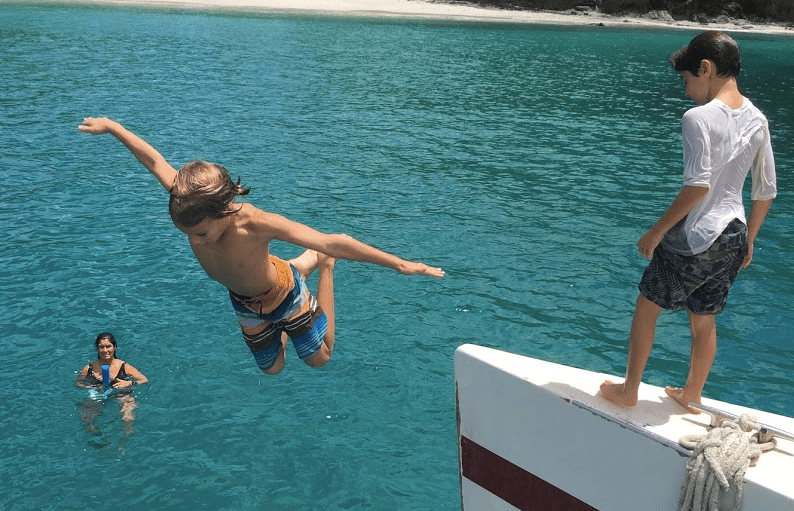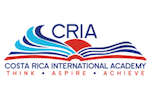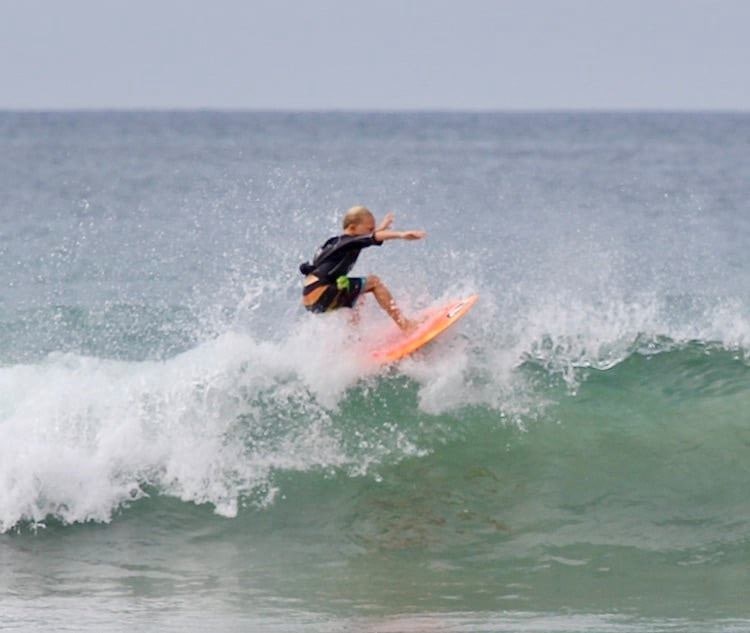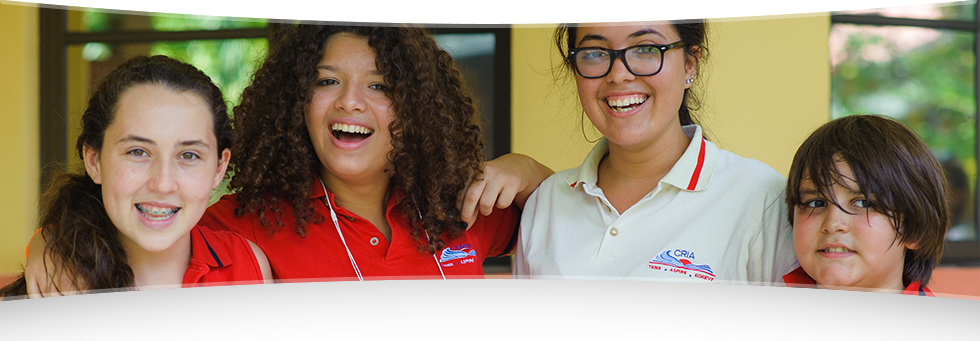
Hey, parents – you have a big job ahead of you! Raising a good human is fulfilling but hard work. Choosing the school where they’ll spend 5, 8, even 13 years… well, that’s a big component to the journey.
International accreditation is the first element to look for in the best private schools in Costa Rica. Why accreditation? The short answer is quality assurance.
Of the most prominent international schools, accredited programs offer quantifiable benchmarks: a strategic focus on academic outcomes within a balanced program, externally accredited for quality assurance by either one of the accrediting agencies recognized by the US Department of Education, or by Cambridge in UK curriculum schools.
Accreditation is the first step in assessing the quality of international schools. But it’s not the only question. So, once you have that answered, here are three more questions to ask your candidate schools:
Question #1: What standards of content and skills do you teach your students?
 In education, this is what we call the elevator pitch: the quick, off-the-top-of-their-head monologue that any classroom teacher or school administrator should be able to recite, be it on an elevator ride, shaking hands for the first time, or at school drop-off/pick-up.
In education, this is what we call the elevator pitch: the quick, off-the-top-of-their-head monologue that any classroom teacher or school administrator should be able to recite, be it on an elevator ride, shaking hands for the first time, or at school drop-off/pick-up.
In other words, this is The Question and it shouldn’t be a hard one. In fact, if the school’s chosen representative can’t immediately tell you about student learning outcomes, in the form of international standards and benchmarks, for any subject, then you should be concerned about the program’s quality.
Likewise, if teachers or school administrators begin describing teaching – textbooks, strategies, values, or methods they use, in all-too-familiar language like “we offer project-based learning,” “we are inquiry-based learning,” “we are teaching global citizens,” or “we are an anti-racist focused school” – then you’ve come up against another warning sign. This type of answer – or rather, non-answer, as learning outcomes go – is typical in schools with priorities other than improving student academic achievement based upon academic standards.
Not that those textbooks, strategies, values, and methods don’t matter. They do. They’re important. We all want children to experience hands-on learning, to be inquisitive, and to grow into mindful, productive citizens. But none of these answers provide clear focus on defined academic student outcomes that can be measured against worldwide peers.
Because, whether your child is headed to the Ivy League, to culinary school, or to any of the world’s other competitive futures, he or she will be measured against his or her peers. An excellent international school makes sure he or she measures favorably.
So, if all you hear are buzzwords about transforming student learning, project-based learning, inquiry-based learning, transdisciplinary learning, multicultural or cultural competency learning, authentic learning, dismantling or abolishing traditional learning, then you’ll need assurance (and proof) that academic focus will not be deprioritized.
 At CRIA, we care about our families. Our students are, by definition, global thinkers and we, as a school, have built an individualized approach to learning. But methodology does not define the CRIA academic experience: Instead, we stand out for our academic excellence, benchmarks, and learning outcomes. Go ahead, put us to the test: Ask any teacher or administrator, and see what they say!
At CRIA, we care about our families. Our students are, by definition, global thinkers and we, as a school, have built an individualized approach to learning. But methodology does not define the CRIA academic experience: Instead, we stand out for our academic excellence, benchmarks, and learning outcomes. Go ahead, put us to the test: Ask any teacher or administrator, and see what they say!
So, ask the question. And if you get one of the above-cited answers, seek greater detail, “I’m not asking how you teach, but want to know what you teach.” What you want to hear: identifiable content, as well as thinking and learning skills, defined for each grade level and subject area.
Put it this way: As you interview candidate private schools in Costa Rica, remember that every class and subject should have easily understandable and defined student outcomes for English, another language, math, science, social studies, PE/health, visual and performing arts.
Question #2: How do you know that my child is succeeding?
 Promises and declarations are nothing, without facts to back them up. When seeking an internationally accredited program at one of the top private schools in Costa Rica, parents should receive a very understandable answer, at least for high school-level classes.
Promises and declarations are nothing, without facts to back them up. When seeking an internationally accredited program at one of the top private schools in Costa Rica, parents should receive a very understandable answer, at least for high school-level classes.
The three main prescribed content curricula found at Costa Rica’s best international schools are the US Advanced Placement (AP) program, the British A-level program, and the International Baccalaureate (IB) Diploma Program. Additionally and increasingly, university dual enrollment programs are also gaining important momentum at the best international schools worldwide. (We’ll discuss more on the differences between these curriculum options, in Part III of this series.)
 At CRIA, we deliver very compelling value in allowing our high school students to achieve university credit for work done while at CRIA. The fastest growing and most robust curriculum to this purpose is our dual enrollment program, in which we partner with Grand Canyon University to allow our students to earn credits not only for high school but toward their college transcripts.
At CRIA, we deliver very compelling value in allowing our high school students to achieve university credit for work done while at CRIA. The fastest growing and most robust curriculum to this purpose is our dual enrollment program, in which we partner with Grand Canyon University to allow our students to earn credits not only for high school but toward their college transcripts.
Metrics for success are easily communicated for any of these high school programs. But, what about pre-K to grade 9? How can you, as a parent, be confident that your child is learning at grade level and on track for success in high school and beyond?
“How do you measure my child’s success?” boils down to how a school assesses student proficiency across academic standards. This is incredibly important, not for arbitrary or grading reasons, but because these standards help you and your child foster his or her strengths and identify any areas for improvement. At each grade level, not just when students reach high school.
The ability and readiness to assess a student’s proficiency across academic standards is one of the most important aspects of an international school experience. This is how we, as teachers and administrators, can objectively assess whether students are making adequate yearly progress, as compared to international students around the world. This is both a benchmark and a vital aspect of quality assurance: You are investing in your child’s long-term success, so you need a clear and long-term roadmap toward success.
 At CRIA, we join the best international school in the world (but only a handful of private schools in Costa Rica) in implementing one of the most dynamic external assessment programs: MAP Testing, which shows how students (K-8) are performing against more than 10 million peers worldwide. At CRIA, we use MAP tests to determine student strengths and weaknesses across standards for Mathematics and English language usage/comprehension, and you, as a parent, will receive a report at each grade level. You’ll see how your child’s teachers are able to individualize the learning experience to your student, giving him or her the best opportunity for success. PSAT Testing, administered each October for grades 9-11, continues the academic data collection documented under the MAP assessments, and is instrumental for providing the best opportunity for students to succeed in a verifiable way.
At CRIA, we join the best international school in the world (but only a handful of private schools in Costa Rica) in implementing one of the most dynamic external assessment programs: MAP Testing, which shows how students (K-8) are performing against more than 10 million peers worldwide. At CRIA, we use MAP tests to determine student strengths and weaknesses across standards for Mathematics and English language usage/comprehension, and you, as a parent, will receive a report at each grade level. You’ll see how your child’s teachers are able to individualize the learning experience to your student, giving him or her the best opportunity for success. PSAT Testing, administered each October for grades 9-11, continues the academic data collection documented under the MAP assessments, and is instrumental for providing the best opportunity for students to succeed in a verifiable way.
As a parent, you should expect regular and reported tracking of your child’s capabilities. Remember, it’s better to know both your child’s strengths and where he or she is not proficient, so you and your child’s teachers and administrators can partner to plan for success.
Question #3: How do you compare the value of your program to other schools?
 This question may be the hardest for some parents to ask but remember, your child’s schooling is both formative and an investment in your child’s future (and your finances). Your investment acumen should compel you to learn the differences between school choices.
This question may be the hardest for some parents to ask but remember, your child’s schooling is both formative and an investment in your child’s future (and your finances). Your investment acumen should compel you to learn the differences between school choices.
Understanding the ‘Mid-Market’ International School Option
The fastest-growing segment in the international school landscape, including internationally accredited private schools in Costa Rica, is what is generally referred to as the mid-market option.
As more and more expatriates are paying for their child’s tuition from personal income rather than through their employers, and as local families are choosing to enroll their children in western accredited schools for academic quality assurance, facilities, and certified teachers they employ, a mid-market school’s annual tuition range of $8,000 to $12,000 (see CRIA tuition & fees) provides the best value education for tuition fees paid. (Point of comparison: Elite international schools charge tuition upwards of $25,000-$50,000+ per year.)
 At CRIA, we are an excellent example of what you can/should expect in a mid-market range international school. With 32 acres of land and facilities that include a covered gym, multi-purpose hall with theater/auditorium/cafeteria functions, swimming pool, playfields, and courts, CRIA is a lovely, safe, and fun campus. We hire certified teaching and administrative staff to operate on the premises. Our mission is college preparatory from Toddler to Grade 12 and our curriculum is aligned to prepare students for success in tertiary education.
At CRIA, we are an excellent example of what you can/should expect in a mid-market range international school. With 32 acres of land and facilities that include a covered gym, multi-purpose hall with theater/auditorium/cafeteria functions, swimming pool, playfields, and courts, CRIA is a lovely, safe, and fun campus. We hire certified teaching and administrative staff to operate on the premises. Our mission is college preparatory from Toddler to Grade 12 and our curriculum is aligned to prepare students for success in tertiary education.
So, what imbues this superior value into mid-market school tuition? As a parent, look for a mid-market college preparatory program that provides opportunities for students to gain university credit from courses taken while still in high school. Expect to see ample facilities with trained and certified staff, with the same quantifiable academic outcomes achieved at so-called premium schools.
Here is a sample from recent research done on the facilities differences between mid-market and premium schools:

Do not be shy about asking your prospective international school their value proposition compared to other options in the region. A good school will not only be happy to be asked but will answer well. Compare the quality of teachers, the facilities, and the opportunities for students to challenge themselves and continuously improve, with an evidence-based assessment of their performance against peers worldwide.
Interested in joining the CRIA family?
We’d love to meet your family and learn about your journey to researching the best private schools in Costa Rica. Learn more about the CRIA admissions process and get in touch to schedule a campus visit. We look forward to it!

